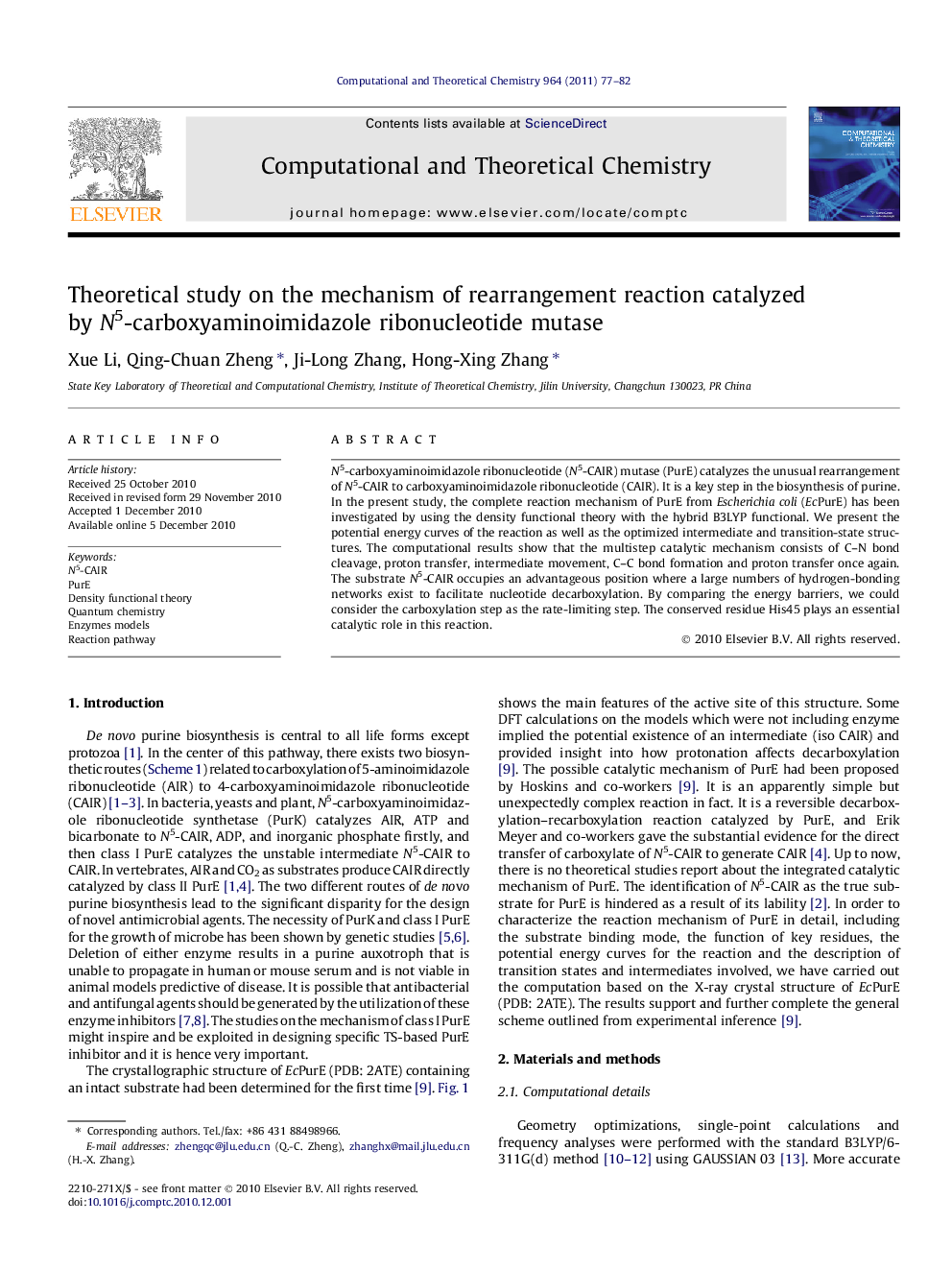| Article ID | Journal | Published Year | Pages | File Type |
|---|---|---|---|---|
| 5395306 | Computational and Theoretical Chemistry | 2011 | 6 Pages |
Abstract
N5-carboxyaminoimidazole ribonucleotide (N5-CAIR) mutase (PurE) catalyzes the unusual rearrangement of N5-CAIR to carboxyaminoimidazole ribonucleotide (CAIR). It is a key step in the biosynthesis of purine. In the present study, the complete reaction mechanism of PurE from Escherichia coli (EcPurE) has been investigated by using the density functional theory with the hybrid B3LYP functional. We present the potential energy curves of the reaction as well as the optimized intermediate and transition-state structures. The computational results show that the multistep catalytic mechanism consists of C-N bond cleavage, proton transfer, intermediate movement, C-C bond formation and proton transfer once again. The substrate N5-CAIR occupies an advantageous position where a large numbers of hydrogen-bonding networks exist to facilitate nucleotide decarboxylation. By comparing the energy barriers, we could consider the carboxylation step as the rate-limiting step. The conserved residue His45 plays an essential catalytic role in this reaction.
Related Topics
Physical Sciences and Engineering
Chemistry
Physical and Theoretical Chemistry
Authors
Xue Li, Qing-Chuan Zheng, Ji-Long Zhang, Hong-Xing Zhang,
